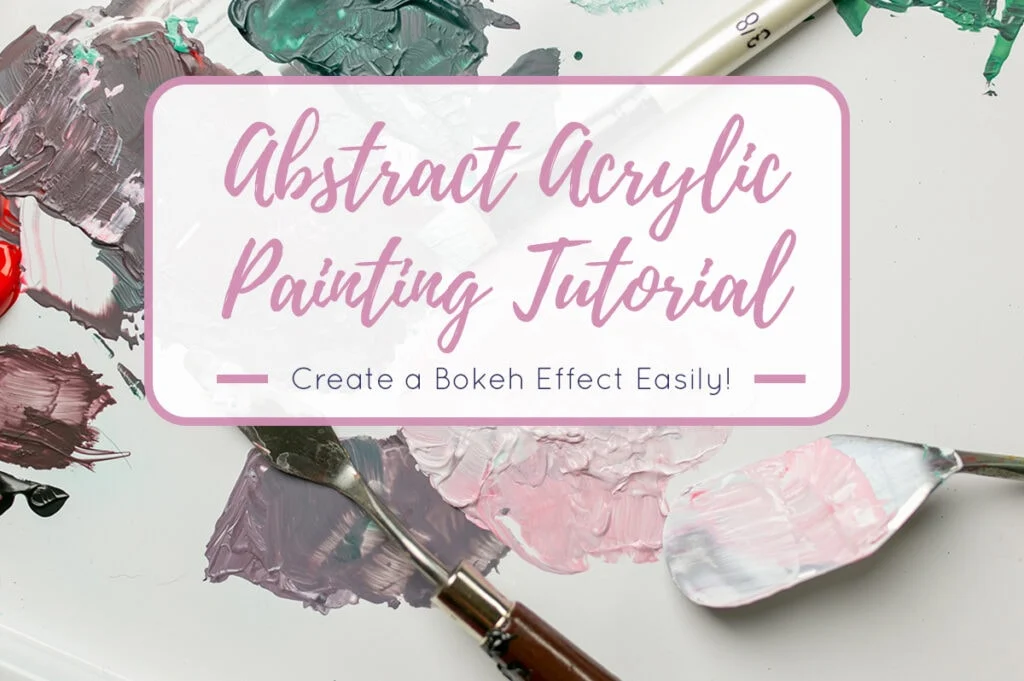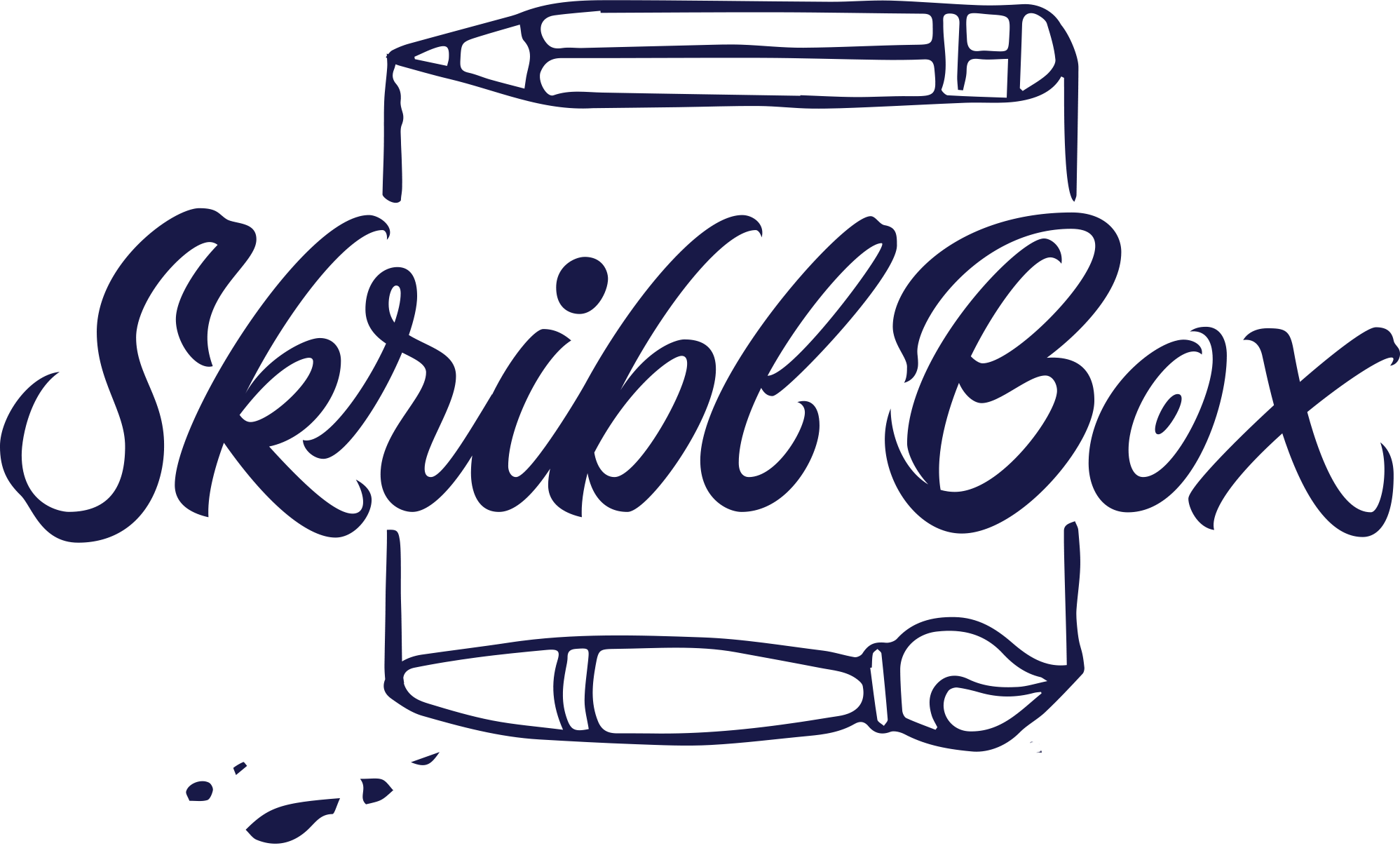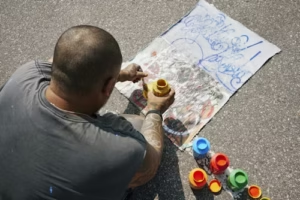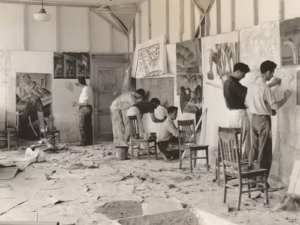
Expert Guide for Beginners Step-by-Step Abstract Acrylic Painting Tutorial
Painting with acrylics is a satisfying and joyful artistic activity that lets you convey your unique perspective and let your ideas run free. You may easily become an expert acrylic painter with the correct tools, methods, and practice.
This article includes a comprehensive guide on Abstract acrylic painting tutorials. From basic techniques to advanced methods, it includes all the details you need to create stunning acrylic paintings. To find out more, keep reading.
Essential Supplies for Acrylic Painting
Gathering the important supplies is a must before beginning your acrylic painting journey. The list of supplies you’ll need is as follows:
➔ Acrylic Paint
Purchase a high-quality acrylic paint set with a variety of colors from Skriblbox. For vivid and durable results, look for paints with a high pigment concentration.
Shop Our Premium Acrylic Paints
➔ Brushes
There are several sizes and forms for acrylic brushes. Get a variety of brushes to cover multiple techniques, such as filbert, round, and flat brushes.
Shop Our Paint Brushes
➔ Canvas
Select a canvas that works well with acrylic paint. Popular options include canvas boards and stretched canvas. Ensure the canvas is properly prepped and ready for usage.
Shop Our Canvas
➔ Palette
To mix your acrylic paints, you can use a typical plastic palette or a stay-wet palette, which retains the moisture in your paints longer.
Shop Our Pallete
➔ Palette Knife
When combining colors and adding texture to your paintings, a palette knife comes in handy.
➔ Medium
Acrylic mediums change the fluidity and drying time of acrylic paint. Gloss, matte, and gel mediums are a few popular kinds of medium.
Shop Our Medium
➔ Rags and Water
To clean your brushes and remove extra paint, always have a jar of water along with a few rags or clothes available.
Expert Guide for Beginners – Step-by-Step Abstract Acrylic Painting Tutorial
Let’s begin by going over the comprehensive Skriblbox Expert Guide for Beginners, which will teach you how to utilize acrylic paints for your painting.
◆ Dampen the Canvas
First, apply water to your canvas in a brushing motion. The paint will merge better with the water. When the canvas dries, it wants to stick to the paint, which ruins the silky texture of everything. The canvas should shine, but there shouldn’t be any pools of water; you just want a very thin layer of water.
◆ Add Background
Let’s stick to only two background colors for this tutorial: Payne’s Grey and Titanium White. You could easily replace these around as per your choice.
Get primarily white on your brush, with a hint of grey. Avoid over-blending them, as it will result in a pale grey color. Rather, you want your canvas to be mostly white with a few greyish-blue streaks. Put both on the brush, but do not blend them.
Now, work only vertical up-and-down strokes until everything appears seamless and there are lovely blue streaks blended into the white.
◆ Add Variation
Next, add a little variation with left and right strokes using larger concentrations of grey and white. Include a few darker grey spots to the upper left, bottom left, and bottom right.
Cross-hatch a few horizontal strokes and combine them with some vertical ones so that all brushstrokes don’t appear to be pointing in the same direction. Blend these extra marks to remove any sharp edges.
When applying color, hold your brush at a 45-degree angle, but when blending, hold it considerably lower, about a 20-30-degree angle. Use very mild pressure when painting, allowing the brush’s weight to draw the paint rather than exerting a lot of pressure.
◆ Adding Details
Once the first layers have dried, begin adding details to your artwork. For greater accuracy, use tiny brushes and add the landscape’s features and textures gradually. Create depth and dimension by observing how light and shadow interact.
◆ Finalizing and Fine-Tuning
After you’re done with your painting, take a step back and evaluate your work of art. Make any necessary changes to the color scheme, values, and details. Consider applying highlights and shadows to give your designs more depth and interest. Try new things and showcase your creativity.
Follow This Skriblbox Expert Guide to Master Your Acrylic Painting Skills!
Acrylic painting is simple to master with the right materials, methods, and experience. Always start with the basics, try different techniques, and most of all, have fun while doing it. Follow this Abstract acrylic painting tutorial to have a better understanding of the subject. Now grab some paints, a palette, and brushes, and let your creativity run wild on a canvas!



 Shop Our Premium Acrylic Paints
Shop Our Premium Acrylic Paints


